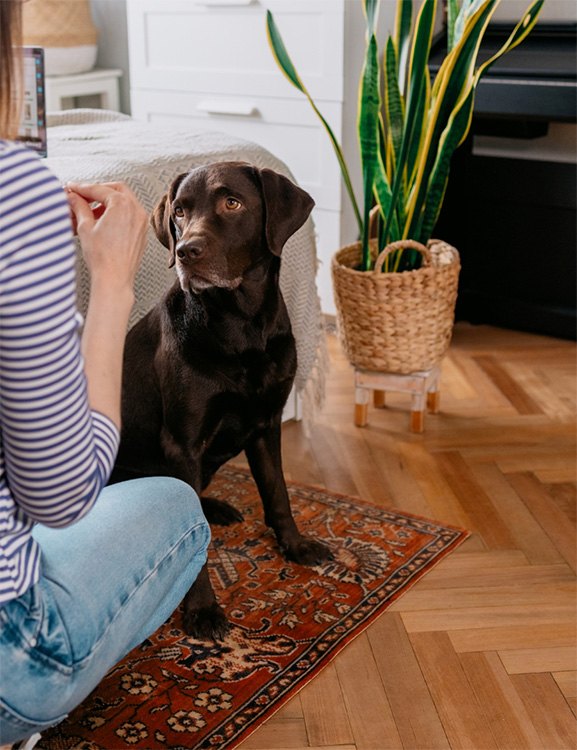If your pet doesn't like a certain area being touched, then work gradually through this training.
Always do the training in the same room, in a place where they are relaxed and like to be.
- Start with an area you know your pet can be comfortably touched and say it (e.g. ‘shoulder’). Reward with a tasty treat as you say the area. You can move on to the next stage when you are successful 4 or 5 times out of 5 – success is when your pet does not move away or show any calming signals.
» Read more about calming signals
- Now you can add in the area you are wanting to train to be able to handle. Start with the area where they are relaxed, move your hand to another part. Say the new place (e.g. ‘paw’) reward and then move back to the area where they are comfortable.
- Always end on touching a comfortable place and a nice reward. If your pet moves away then let them go. They may come back to you again to continue training – this is called consent.
- Once you can touch the new place and your pet is comfortable, continue the training by increasing the time you can hold there. See our example of training to check nails below.
Example: Touch training, to be able to trim nails
Tips:
- Ensure you are practising each stage with each different paw.
- End the training if they choose to move away or end it yourself on a positive note.
- Stay calm and positive and be prepared to take this training gradually.
Step-by-step:
- Gently introduce a touch to their paw and treat.
- Do the paws remain in place, and their leg is not moved away? Then you can progress to picking up your pet’s paw.
- When fully comfortable, increase the time you are holding their paw for. Remember, your pet may be at a different stage for each different paw.
- When you can hold their paw for 10 seconds, begin to introduce a very gentle massage to the paw.
- Then hold each nail individually for a few seconds.
- Pretend to trim their nails, heavily rewarding any time they choose to keep their paw still.
» DOWNLOAD this as a printable page
» Find out how to teach your pet to accept being checked over
